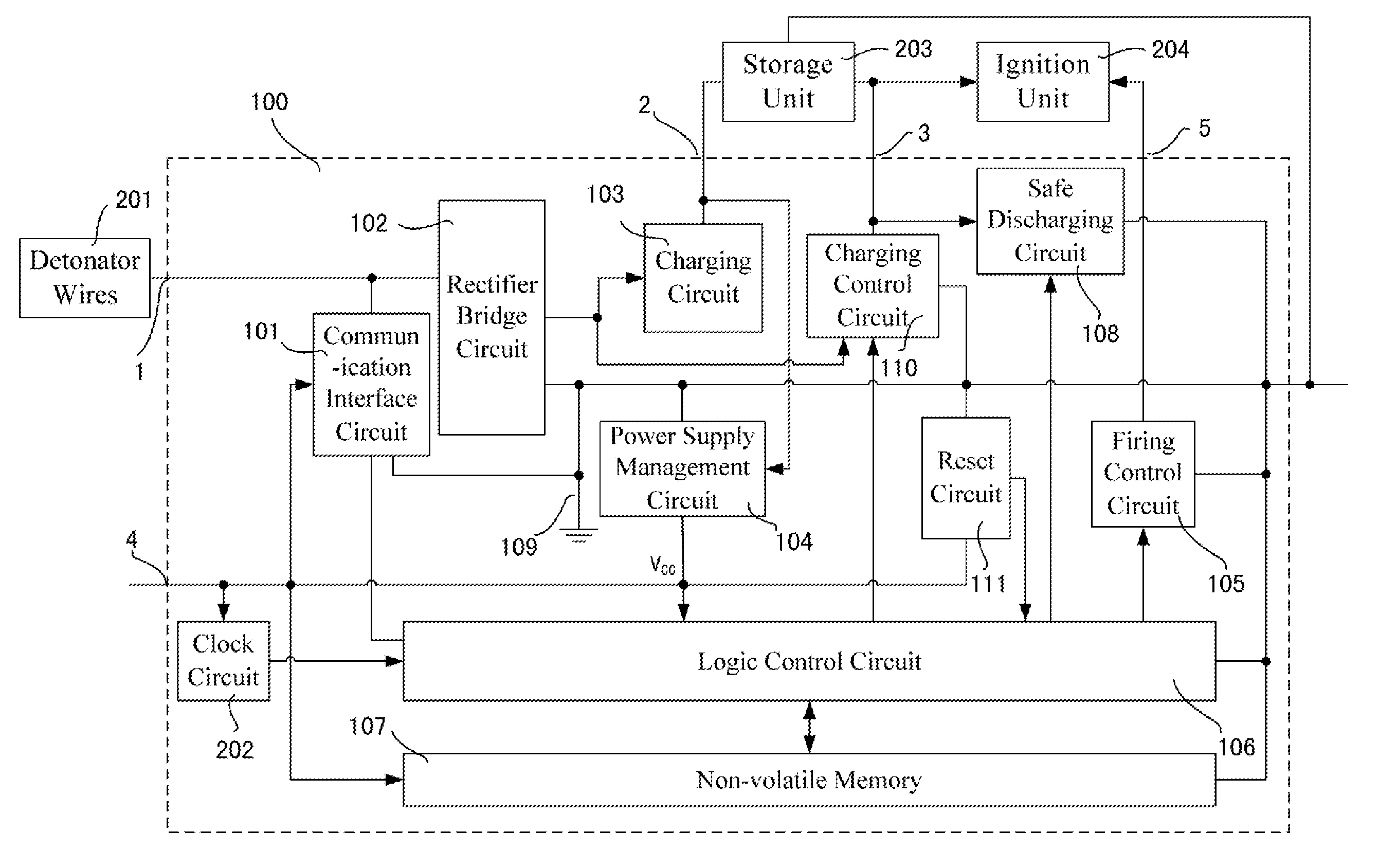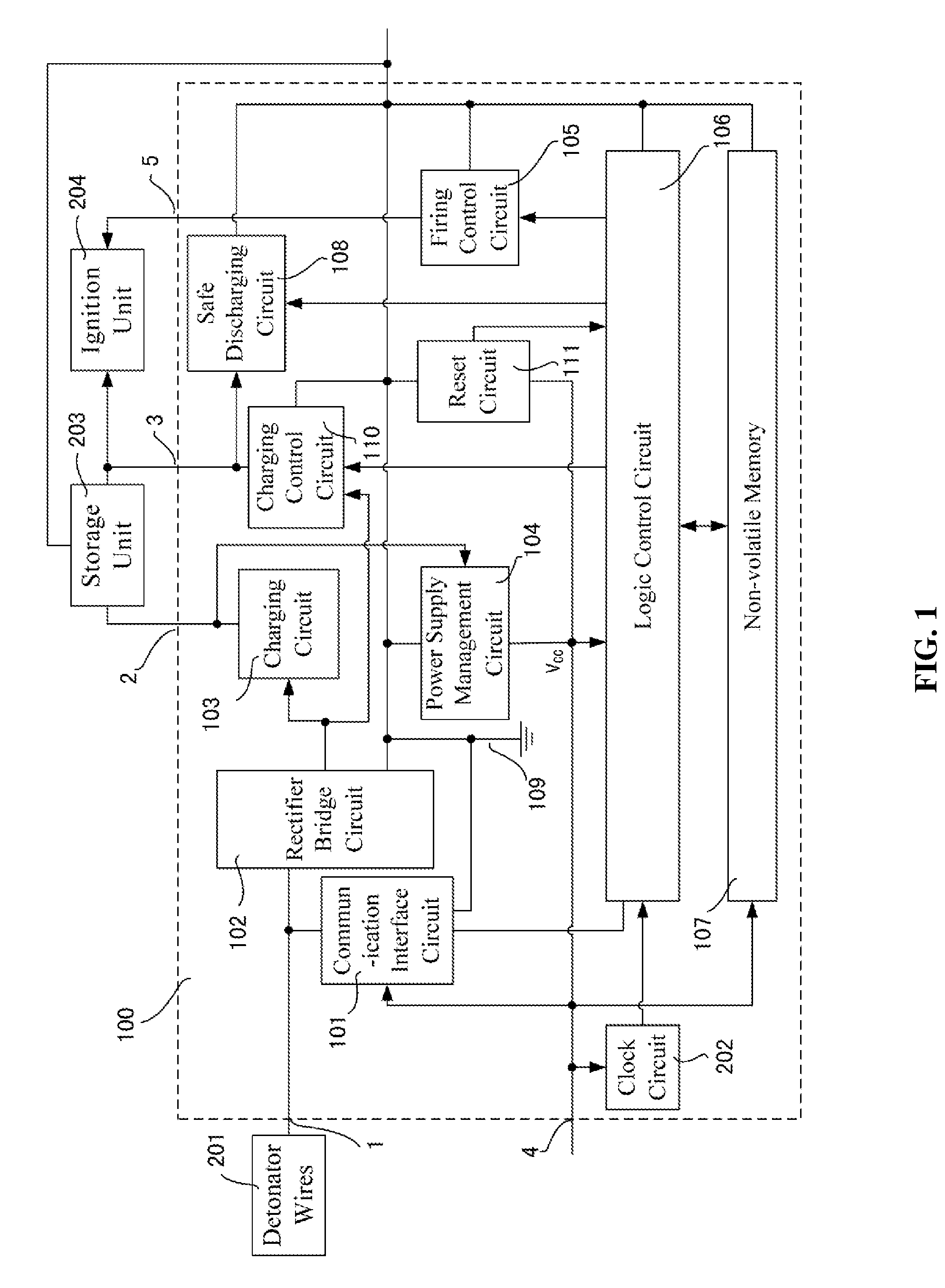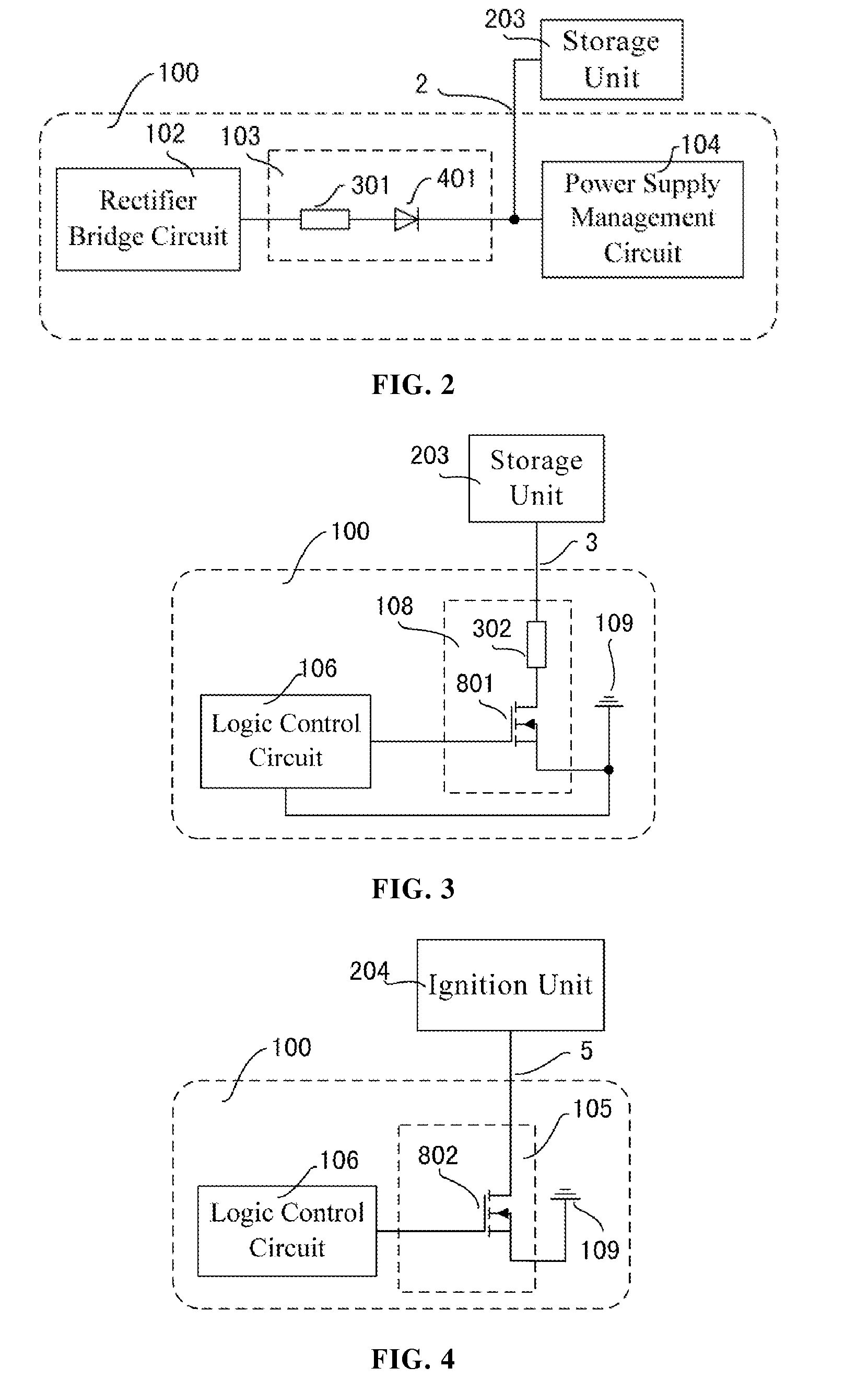Electronic detonator control chip
a control chip and detonator technology, applied in the direction of electric fuzes, instruments, lighting and heating apparatus, etc., can solve the problems of low precision but, unchangeable delay time, heavy metal dispersion, etc., to improve the flexibility of blasting network design, simplify construction complexity, and reduce the quantity of registers
- Summary
- Abstract
- Description
- Claims
- Application Information
AI Technical Summary
Benefits of technology
Problems solved by technology
Method used
Image
Examples
first embodiment
[0138]As the charging control circuit 1101, as shown in FIG. 10, the charging control circuit 1101 includes a PMOS transistor 705, a PMOS transistor 706, a PMOS transistor 707, an NMOS transistor 807, an NMOS transistor 808, an NMOS transistor 809, a resistor 307, and a diode 406. The detailed connection is described as follows:[0139]The source and the substrate of the PMOS transistor 705 are connected to the power supply management circuit 104, the grid of the PMOS transistor 705, the grid of the NMOS transistor 807 and the grid of the NMOS transistor 808 are connected to the logic control circuit 106 together. The drain of the PMOS transistor 705, the drain of the NMOS transistor 807 and the grid of the NMOS transistor 809 connect together. The source and the substrate of the PMOS transistor 706, and the source and the substrate of the PMOS transistor 707 connect together, and are connected to the rectifier bridge circuit 102 together. The grid of the PMOS transistor 706, the drai...
second embodiment
[0140]As the charging control circuit 1101, as shown in FIG. 11, the charging control circuit 1101 includes a PMOS transistor 705, a PMOS transistor 706, a PMOS transistor 707, an NMOS transistor 807, an NMOS transistor 808, an NMOS transistor 809, a resistor 307, and a diode 406. The detailed connection is described as follows:[0141]The source and the substrate of the PMOS transistor 705 are connected to the power supply management circuit 104. The grid of the PMOS transistor 705, the grid of the NMOS transistor 807 and the grid of the NMOS transistor 808 are connected to the logic control circuit 106 together. The drain of the PMOS transistor 705, the drain of the NMOS transistor 807 and the grid of the NMOS transistor 809 connect together. The source and the substrate of the PMOS transistor 706, the substrate of the PMOS transistor 707 and one end of the resistor 307 are connected to the rectifier bridge circuit 102 together; while the other end of the resistor 307 is connected t...
third embodiment
[0142]As the charging control circuit 1101, as shown in FIG. 12, the charging control circuit 1101 includes a PMOS transistor 705, a PMOS transistor 706, a PMOS transistor 707, an NMOS transistor 807, an NMOS transistor 808, an NMOS transistor 809, a resistor 307, and a diode 406. The detailed connection is described as follows:[0143]The source and the substrate of the PMOS transistor 705 are connected to the power supply management circuit 104; the grid of the PMOS transistor 705, the grid of the NMOS transistor 807, and the grid of the NMOS transistor 808 are connected to the logic control circuit 106 together; the drain of the PMOS transistor 705, the drain of the NMOS transistor 807, and the grid of the NMOS transistor 809 connect together. The source and the substrate of the PMOS transistor 706, and the source and the substrate of the PMOS transistor 707 are connected to one end of the resistor 307 together, while the other end of the resistor 307 is connected to the rectifier ...
PUM
 Login to View More
Login to View More Abstract
Description
Claims
Application Information
 Login to View More
Login to View More - R&D
- Intellectual Property
- Life Sciences
- Materials
- Tech Scout
- Unparalleled Data Quality
- Higher Quality Content
- 60% Fewer Hallucinations
Browse by: Latest US Patents, China's latest patents, Technical Efficacy Thesaurus, Application Domain, Technology Topic, Popular Technical Reports.
© 2025 PatSnap. All rights reserved.Legal|Privacy policy|Modern Slavery Act Transparency Statement|Sitemap|About US| Contact US: help@patsnap.com



